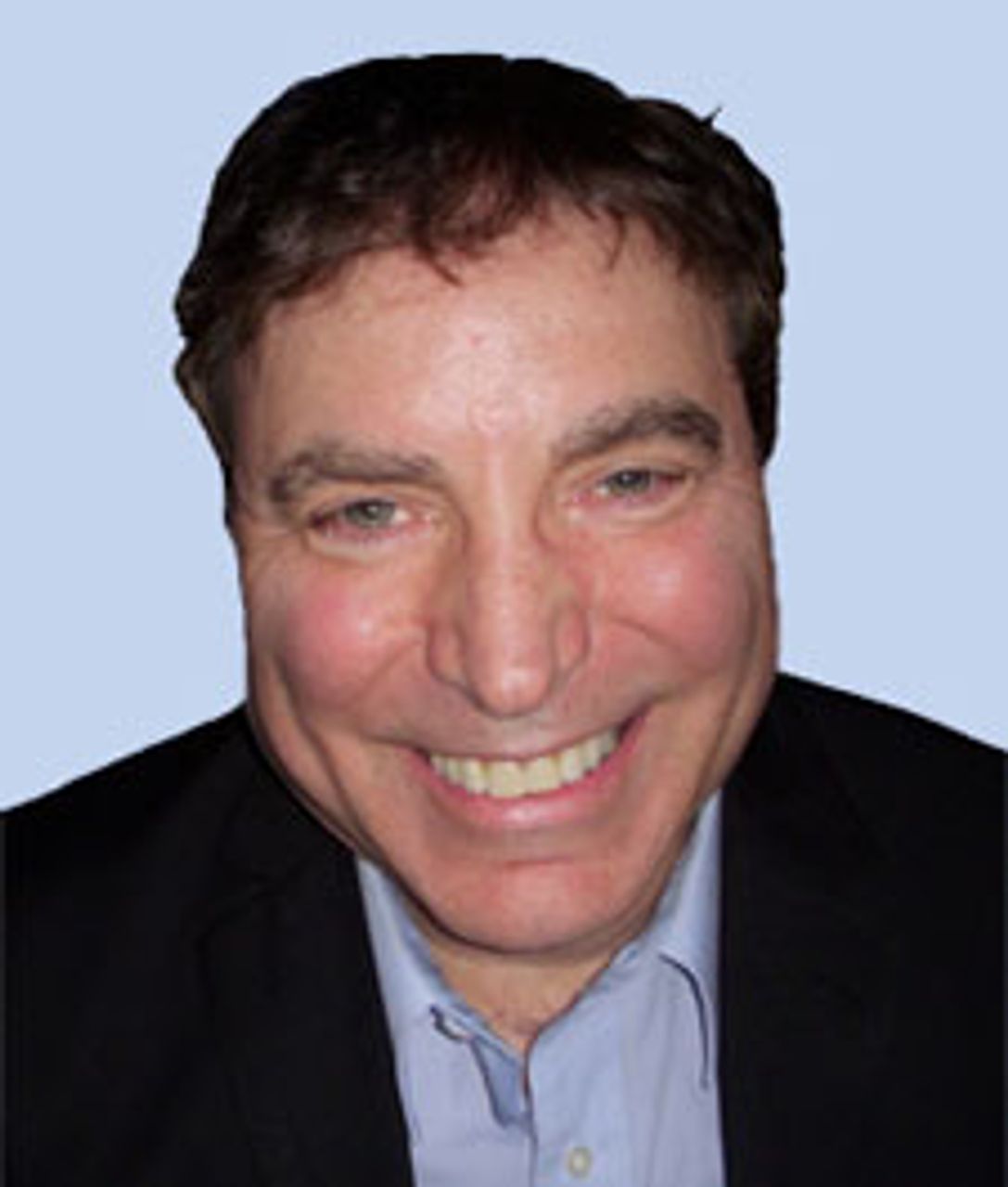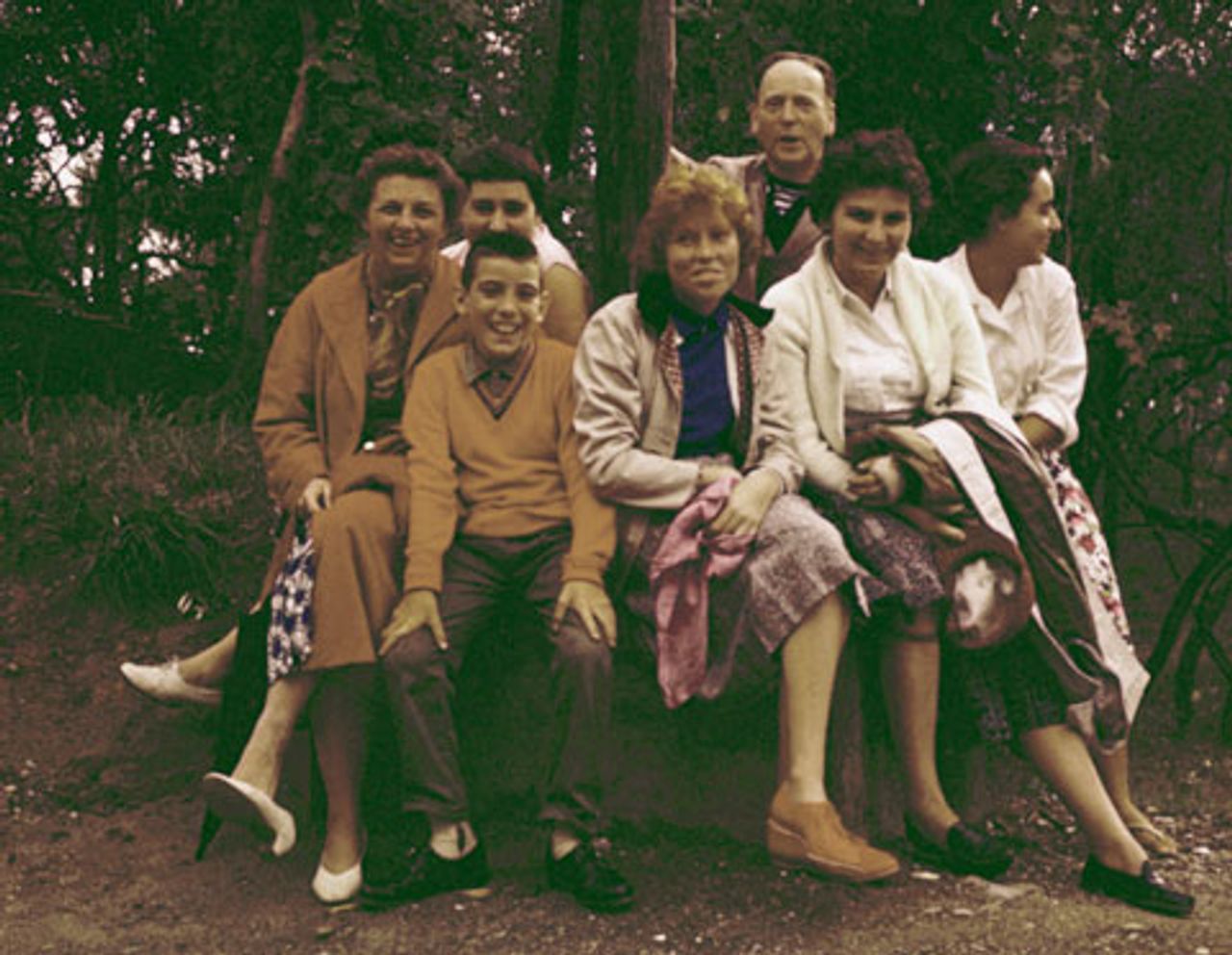 John J. Heartfield
John J. HeartfieldJohn J. Heartfield is the grandson of the left-wing German artist and master of the political photo montage, John Heartfield [born Helmut Herzfeld, 1891-1968], whose work we recently wrote about on the WSWS. The elder Heartfield is renowned in particular for his scathing and imaginative pictorial attacks on Hitler and the Nazis.
His grandson, in addition to his work in information technology and business writing, is a songwriter and author. (I will refer in this article henceforth to John J. Heartfield as “John”, his grandfather as “Heartfield”).
John has combined his technical and artistic interests in developing an online archive of his grandfather’s important life and work, intended to provide information and material about the artist. John very generously made images available for our recent review.
Archive URL: http://www.johnheartfield.com/john_heartfield_PHOTOMONTEUR_ARCHIVE.html
I spoke to John by Skype about his grandfather and his plans for the archive. “What’s most important”, said John, “is that people know about this man.” John sees the archive as a way of overcoming the marginalisation of his grandfather’s work that has taken place over the past period. Heartfield regularly appears on lists of the most influential artists of the twentieth century, but “still many galleries and even some art professors don’t know about him.”
I asked how the archive came about.
“When I started studying multi-media in 1993 at New York University I did a lot of work on the internet and digital media. For years I wanted the [German] Akademie der Künste [Academy of the Arts] to be more proactive with Heartfield’s work. There was nothing really on the Akademie der Künste web site. Finally, about a year and a half ago I realised, ‘Wait a minute! You produce multi-media!’
“John Heartfield has always been such a huge part of my life. Beyond being my grandfather, he’s a tremendous inspiration to me whenever I think of someone with courage. Would I have the courage to do what he did?
“What I wanted to do then was try, through digital media, to build a real archive. My goal here is to create a hub for his work on the Internet—we know there’s tons of it—where people can come and talk about his work, learn about his work.” He also hopes ultimately to have articles and comment pieces on the site.
One obvious area where John will be able to expand our knowledge of the artist’s life is through the extensive private material in his collection, including family photographs and correspondence. John met his grandfather at least twice in the 1950s, then again in the 1960s, when the photograph below was taken.
 Heartfield In Italy (Sestri Levante & Cavi) in the 1960s, Left to Right: Gertrude "Tutti" Heartfield (John's third wife); his daughter Eva; John Joseph Heartfield (son of John's son Tom George Heartfield); Catherine Heartfield (daughter of John's son Tom George Heartfield); John Heartfield; Lina A. Heartfield (wife of John's son Tom George Heartfield); Carla Dasso (Lina's niece) [Copyright © 2012 John J Heartfield of eCurtain Media Inc. All Rights Reserved.]
Heartfield In Italy (Sestri Levante & Cavi) in the 1960s, Left to Right: Gertrude "Tutti" Heartfield (John's third wife); his daughter Eva; John Joseph Heartfield (son of John's son Tom George Heartfield); Catherine Heartfield (daughter of John's son Tom George Heartfield); John Heartfield; Lina A. Heartfield (wife of John's son Tom George Heartfield); Carla Dasso (Lina's niece) [Copyright © 2012 John J Heartfield of eCurtain Media Inc. All Rights Reserved.]This material has a significance beyond simply shedding light on Heartfield’s personal relationships, as John explained.
“One of the things I’d like to do is at least make people aware of how his life developed, because a lot of people think that he was not that productive in the 1960s.
“But I’ve just gone through a box of old slides, and in almost every photograph he has a camera round his neck. In many of the photographs he’s taking photographs. He was never a professional photographer. I don’t think he knew other photographers’ work, but he always had to express himself.
“Starting at art school, he was not satisfied with his art, he went into politically charged photomontage, and when at the end he was very limited with what he could do with photomontage because of where he was living [in Stalinist East Germany] and the time of his life, he went into photography. He took a tremendous amount of photographs.
“Whether they could really be considered art or not is for other people to decide. But that’s the sort of thing I wanted people to know about him, and I wanted to release this tremendous amount of information.”
This is related as well to John’s ambition to make the material in the Heartfield archive at the Akademie der Künste more widely available. “You have no idea—no idea!—how much art is in the archive. There’s four floors of art, there are models, stage-sets for [German playwright Bertolt] Brecht, sketches, various iterations of montages, [and] these things have never really been seen.”
We talked about the conservation of the archive under the Stalinist regime in East Germany. John said, “there was a reverence for Heartfield’s work there, and they did conserve it well. I don’t think they didn’t catalogue his work because they didn’t love it, they just didn’t have the money. But there was no real push to say, ‘we have something really valuable here for the world to see’.”
The question of Stalinism is unavoidable in any discussion of Heartfield’s work, and there seems to have been official ambivalence at best about his art in East Germany. When he returned to the Stalinist DDR from Britain after the war he was viewed with suspicion and denied entrance to the Akademie der Künste. “He was suspected because his dentist was under suspicion by the Stasi, he was suspected because the length of time he had spent in a capitalist country could have coloured his politics in some way. So he really was treated quite poorly, especially at a time when he had just suffered a heart attack, and he was denied health benefits.”
The intervention of Brecht and novelist Stefan Heym saw Heartfield elected to full membership of the Akademie and his party membership treated as uninterrupted from 1956. This ensured him official recognition until his death in 1968, but his archive remained difficult to access after his death. John said Heartfield’s work had been “marginalised out of recognition because it was locked up behind the Iron Curtain”.
John noted the difficulties of dealing with “the very repressive Stasi regime. I even have stories of people who went to exhibitions where the swastikas were redacted. I really don’t blame those people, because I understand the tremendous pressure they lived under and the kind of emotions that would boil up.
“Of course, I can only speculate how the German government feels about an artist who had swastikas and images of Hitler all over the place, whether they’re that interested in putting his work on a web site.”
We discussed the political disorientation caused by Stalinism. John described Heartfield’s original commitment to communism, and the demoralisation that came from Stalinism’s impact on him.
“I think he really believed he could change people’s minds, and at that time I also think he thought that communism would be a good thing, that if people embraced communism and took care of each other at that level, the working class, then a lot of the world’s problems would be solved. Because he felt that it was capitalism that fuelled the war machine.
“I don’t think he was ready for what eventually happened. I don’t think a lot of people were. There were a lot of people in America who joined the Communist Party, but then they weren’t ready for Stalin, they weren’t ready for the Stasi in East Berlin or Mao’s repressive regime in China. They weren’t ready for what happened. I’m not certain at this point how he felt about it, but I know he must have been disillusioned. When he came back to East Germany he must have been disillusioned by all this.”
What came out most clearly in our conversation, however, were the strengths in the artist’s earlier work. “Heartfield hated two things,” John said. “He hated war and he hated people who twisted the truth.”
John saw his grandfather’s courage as stemming from a determination to speak about the horrors to come in the event of a second world war. “The horror of World War One was never really exposed, I believe, to the public, and this was horror you can’t imagine. There’s a reason why people felt this was a war to end all wars, because this could not happen again.”
Heartfield “feigned insanity to avoid the front, but I’m sure in his circles he knew what was going on, whereas most of the populace just didn’t know what was going on. When Germany started rearming again in the 1920s, no one said anything because people were making millions of dollars on this—the Americans, Deutsche Bank, US Steel—and Hitler started talking about his plans. In a way, Heartfield knew where this was going and how people would suffer.
“He took such risks. He had his teeth kicked in, he was thrown from a streetcar, the SS came to kill him.” Heartfield was not seeking artistic self-expression, so much as political exposure. “He knew these people were leading the country into insanity, that [Nazi leader Joseph] Goebbels was using propaganda to take the country to a place where they would suffer, and he had to expose it. He was almost more like a journalist than an artist, although he never described himself like that.”
John connects Heartfield’s artistic flourishing to the historical period he lived through, saying, “without an Adolf Hitler there wouldn’t have been a John Heartfield.” At the end of Heartfield’s life, John thought, he had not had such a target.
We talked of Heartfield’s relevance now, and the prospects for political art today. John drew a connection between Heartfield’s targets in the 1930s and the contemporary political situation. “You see a montage like Millions Stand Behind Me and this is [the right-wing business lobby] Citizens United [in the US]! It’s the same thing. You know, here’s the politician with his hand out and millions are coming into his hand. Or Hitler Swallows Gold and Spouts Junk—look at the junk they’re spouting now!
“So many of his montages are really relevant today. It’s not just against the Nazis, it’s against a thought-process in politics. You can look at the commercials that are running in America right now, constantly, and you feel that it’s propaganda. They’re there to convince people who will not benefit from certain policies to vote for those policies. That’s a definition of propaganda.”
John thought Heartfield saw himself as an exposer, exposing what was wrong around him. This was clearly a lesson for contemporary artists, who “should be out there exposing hypocrisy.” He said he thought the prospects for political art were excellent, as “there’s a tremendous void.” He pointed to the relative absence of protest art, which is much needed.
John returned several times to his grandfather’s courage, in words that characterise the best of political responses: “There has to be a sort of outrage that says, at the risk of my life, this cannot be allowed to happen.”
Perhaps the most interesting part of John’s archive project is his hope that it will become a place of both education and inspiration. “I want to have people influenced by John Heartfield”, he said, and hoped the archive would become “a tribute and a place for political artists to express themselves eventually.
“What I’m hoping is that this archive will enable people to know who Heartfield was, and do similar things.”
